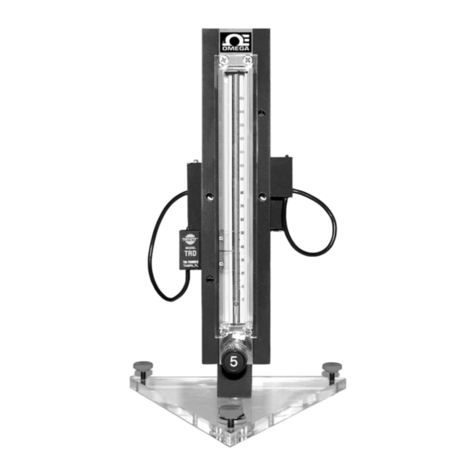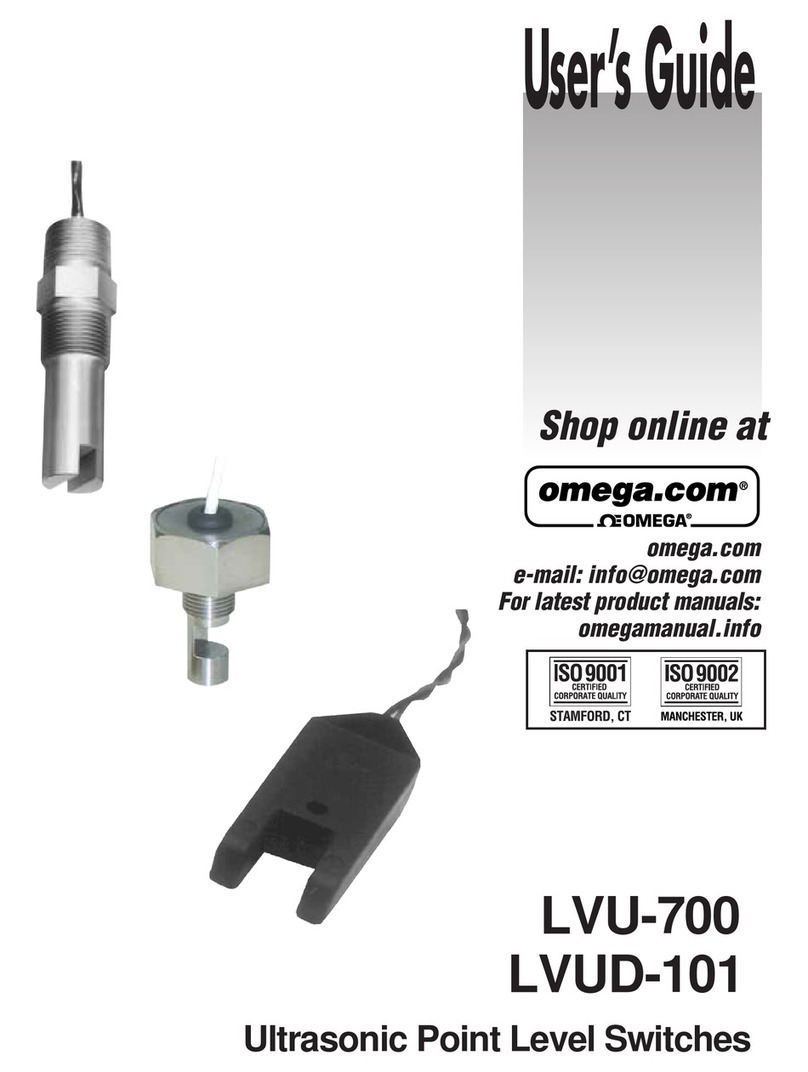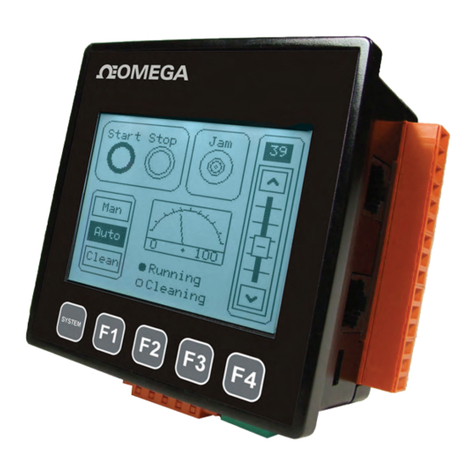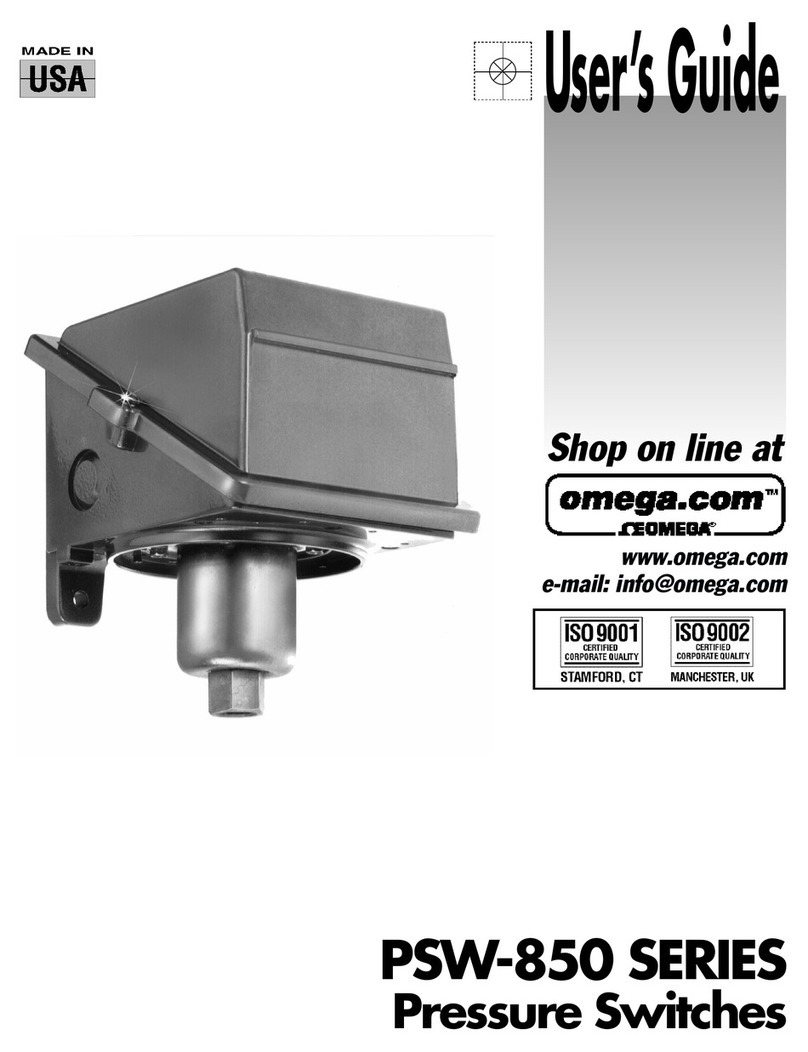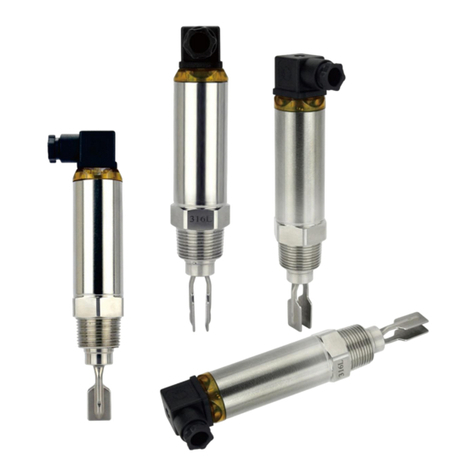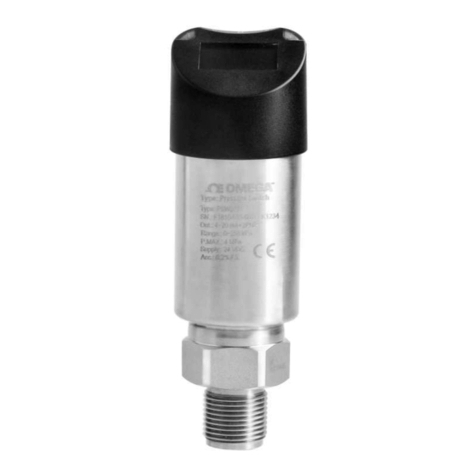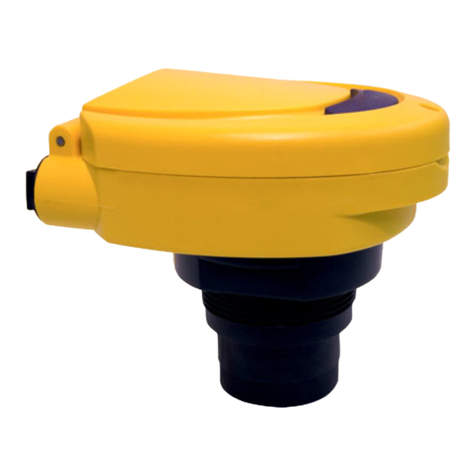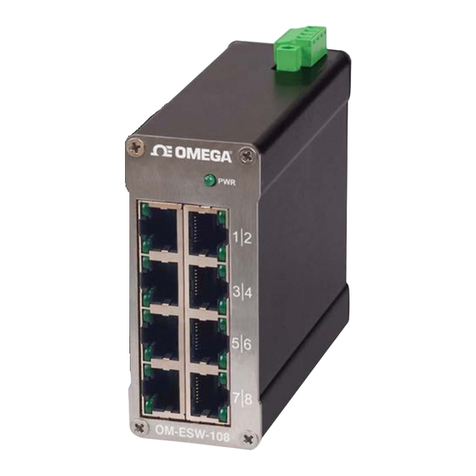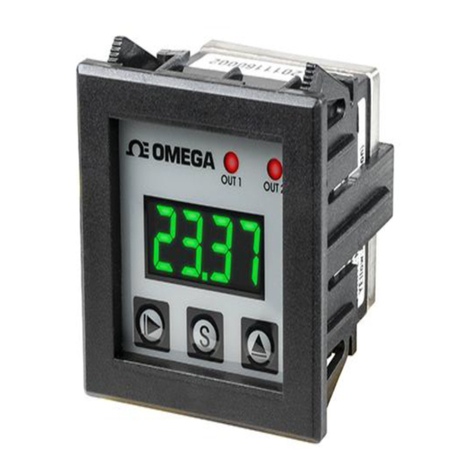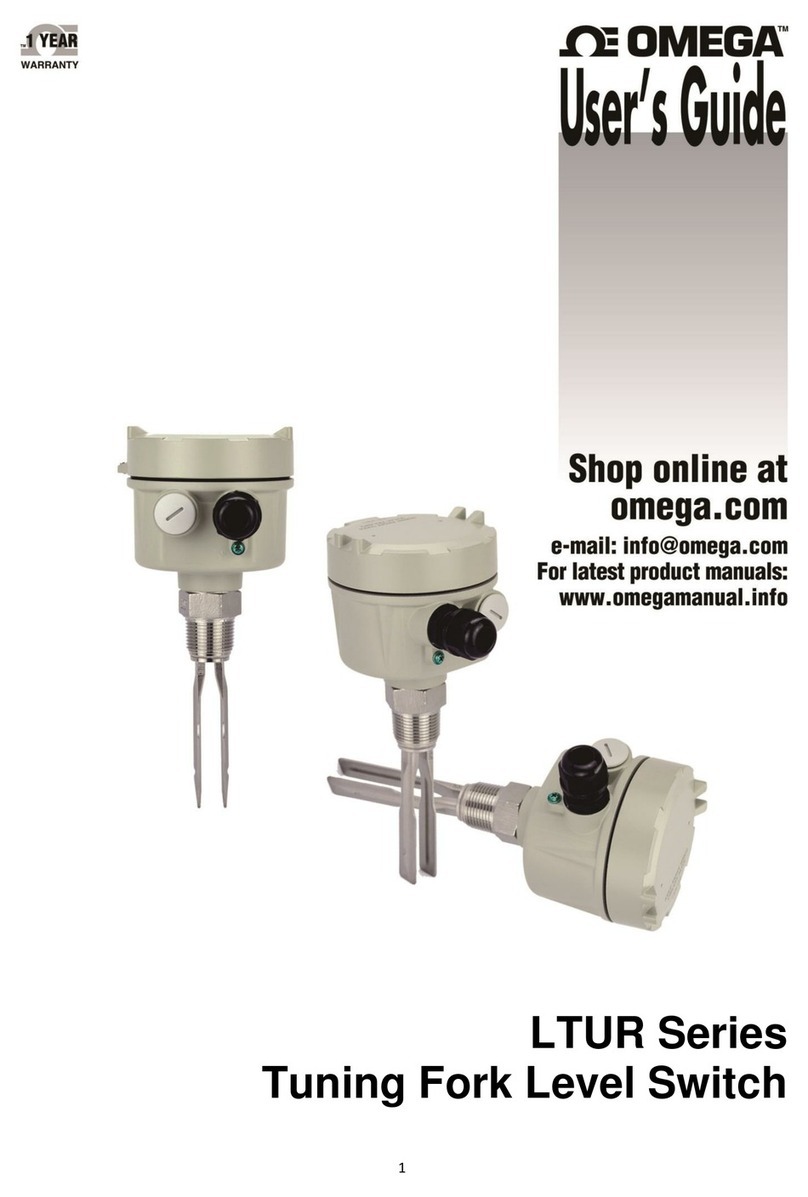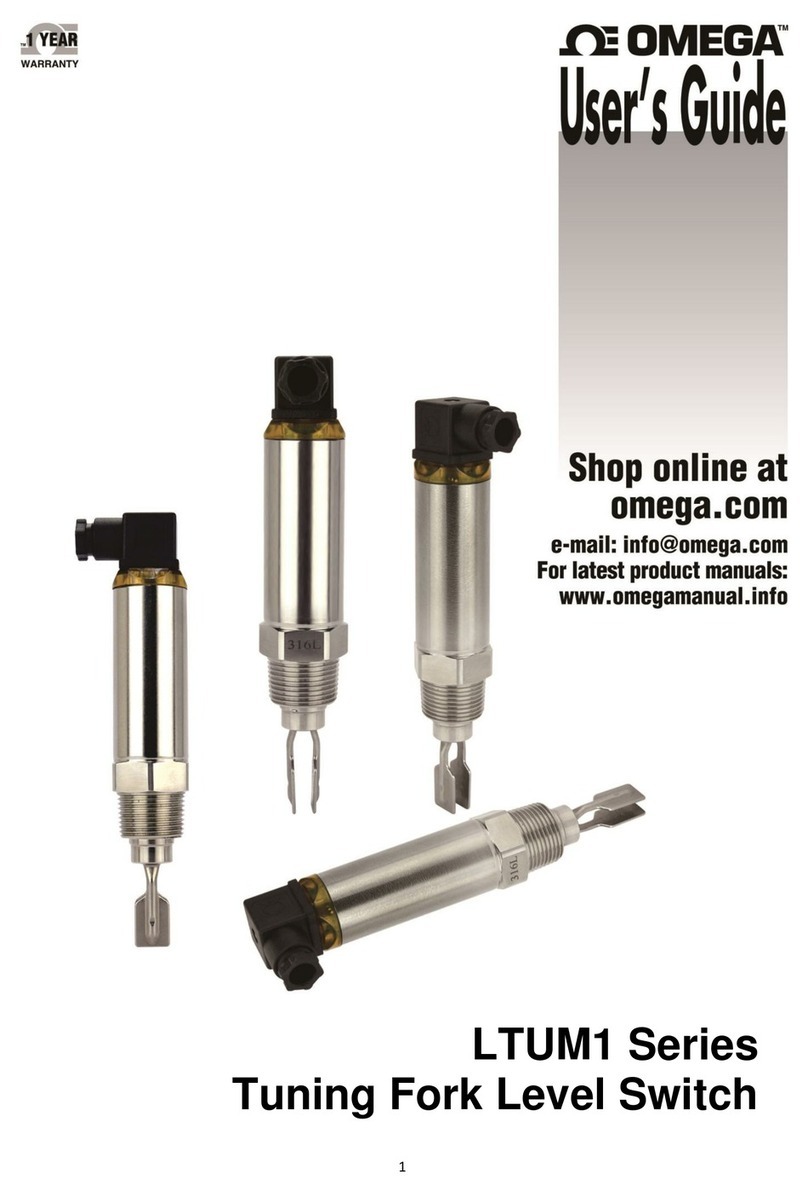
6
SAFETYPRECAUTION(capacitance)StepThree
MakeaFail‐SafeSystem:Designafail‐safesystemthataccommodatesthepossibilityofswitchand/orpower
failure.OMEGAENGINEERINGrecommendstheuseofredundantbackupsystemsandalarmsinadditionto
theprimarysystem.Addingaredundanthighlevelfloatswitchtothesystemisacosteffectivemeansto
preventcostlytankoverflows.
TheLVP‐51‐Rswitchhasasinglerelay.Thenormallyopen(NO)ornormallyclosed(NC)operationisuser
selectedbasedonthedesiredsystemcontrol.Alwaysdesignafail‐safesystemthataccommodatesforthe
possibilityoffunctionaland/orpowerfailuretotheinstrument.The"normal"relaystateiswheretherelay
coilisde‐energizedandtherelayindicatorisOFF.Therefore,ifpoweriscutOFFtotheswitchitwillde‐
energizetherelay.Makesurethatthede‐energizedstateisthesafestateinyoursystemdesign.Assuch,if
switchpowerislost,apumpwillturnOFFifitisconnectedtothenormallyopensideoftherelay.
Technology:Thenon‐intrusiveRFcapacitanceswitchdetectsthepresenceofliquidorairbymeasuringthe
conductiveordielectricvalueswhicharepresentinallmaterials.Anelectricalcapacitorisformedbetween
thelevelswitchandtheoutertankwall.Asliquidrisesandfallsagainsttheinnerwall,thecapacitanceeffectis
greatlyincreasedandthe60VASPSTrelaychangesstate.
Thesensor’soperationmayvarybasedonthedielectricpropertiesofvariousapplicationliquids.Liquids
withadielectricconstantlessthan20maynotbedetectedbyanLVP‐51‐Rsensor.
TableofCommonDielectricConstants:NOTE:Liquidswithaconductivityvalue>100µS/cmarefineif
coatingisnotanissue.Liquidswithadielectricconstantlessthan20willnotbedetectedbyanLVP‐51‐Rlevel
switch,dependingonconditions.
Acetone .....................21
Acetoaldehyde .......22.2
Acetyl methyl hexyl
ketone ........................28
Alcohol ........... 16 to 31
Ammonia ........ 15 to 25
Acetic acid .... 4.1 to 6.2
Butyl chloride ..........9.6
Barium chloride 9 to 11
Benzene ...................2.3
Benzine ....................2.3
Barium nitrate ..........5.6
Bromine ...................3.1
Chlorobenzene . 4.7 to 6
Chlorotoluene ..........4.7
Chloroform ....4.5 to 5.0
Chlorine, liquid .......2.0
Carbon tetrachloride 2.2
Cyan ........................2.6
Cyclohexane methanol
..................................3.7
D.I. Water .................20
Ethyl toluene ...........2.2
Ethyl alcohol ............23
Ethylene glycol ........37
Ethylene oxide ..........14
Ethylene dichloride
..........................11 to 17
Ethylene chloride .. 10.5
Ethyl acetate ............ 6.4
Ethyl salicylate ........ 8.6
Ethyl stearate .......... 2.9
Ethyl silicote ........... 4.1
Formic acid .............. 59
Ferric oleate ............ 2.6
Freon ....................... 2.2
Glycerine .................. 47
Glycol ....................... 30
Glycol nitrite ............ 27
Gasoline ...........2 to 2.2
Hydrochloric acid ... 4.6
Isobutyric acid ........ 2.7
Isobutyl methyl ketone
...................................13
Jet fuel .....................1.7
Lead carbonate .........18
Lead nitrate ...............38
Methyl salicylate .....9.0
Methanol ...................33
Methyl alcohol .33 to 38
Margarine, liquid
........................2.8 to 3.2
Methyl acetate .........7.3
N-butyl formate .......2.4
Nitrobenzene ...26 to 35
Nitrotoluene .............25
Naphthalene ..2.3 to 2.5
Oils, vegetable 2.5 to 3.5
Oils, mineral ..2.3 to 2.4
Oils, petroleum
........................1.8 to 2.2
Oleic acid ................2.5
Propane, liquid
........................1.8 to 1.9
Potassium nitrate
........................5.0 to 5.9
Potassium chloride ..5.0
Stearic acid ..............2.3
Toluene ....................2.4
Trichloroethylene .... 3.4
Trichloroacetic acid 4.5
Terephthalic acid
........................1.5 to 1.7
Thinner .................... 3.7
Urea ......................... 3.5
Vinyl chloride .. 2.8 to 6
Vinyl alcohol 1.8 to 2.0
Water, 20°C ............. 80
Water, 100°C ........... 48
Components:TheLVP‐51‐Risofferedinthreedifferentmodels.Dependingonthemodelpurchased,youmay
ormaynothavebeenshippedallthecomponentsshownbelow.
LVP‐51‐R
oLVP‐51‐R–PSObodywithPPcable
QuickStartGuide
